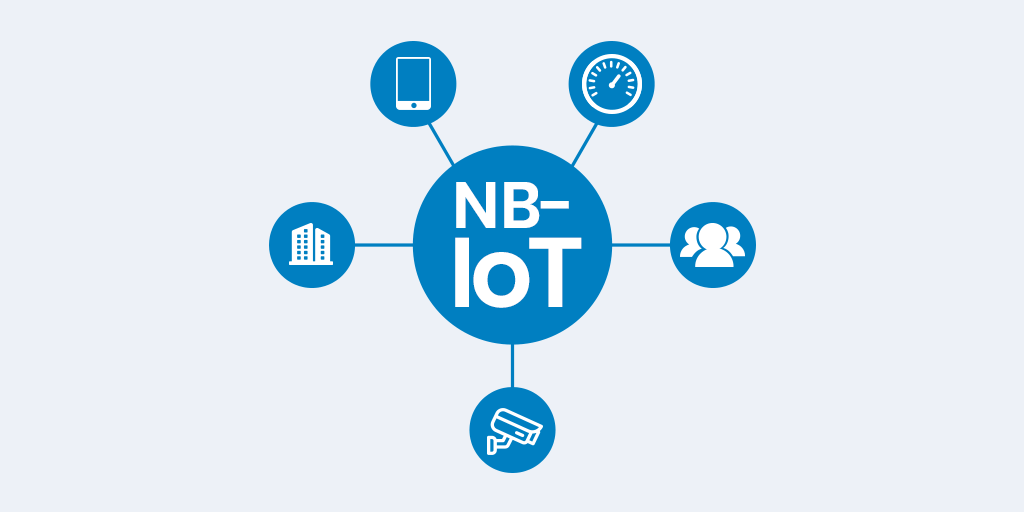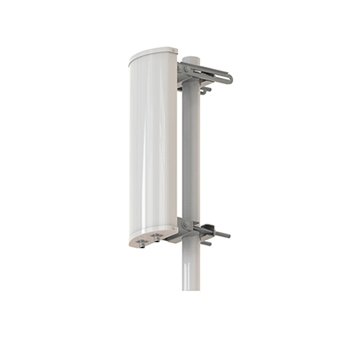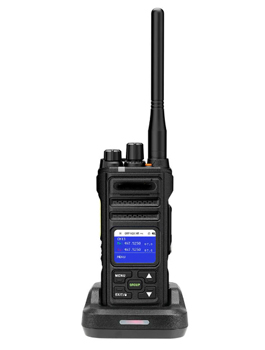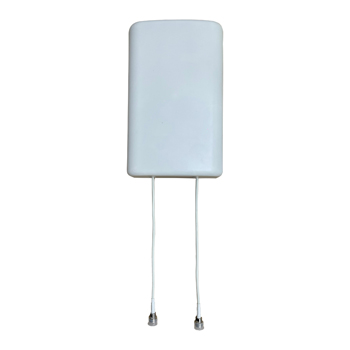Table of Contents
ToggleWhat is NB-IoT?
With the introduction of non-cellular LPWAN (Low Power Wide Area Network) technologies such as LoRa and Sigfox, the mobile industry responded to these emerging technologies with NB-IoT (Narrowband Internet of Things) for IoT and M2M (Machine-to-Machine) applications. This was introduced as part of the release (13) of the 3GPP cellular standards body, which is also known as LTE CAT-NB. The main objectives of the introduction of NB-IoT were to introduce long battery life, low latency, low power, and improved indoor coverage. Another interesting feature of NB-IoT deployments is the ability to co-exist with 2G, 3G, and 4G mobile networks, also 3GPP has already made provisions for the inclusion of NB-IoT in 5G standards. Now let’s dive into more details about the operation of NB-IoT and its features.
How does it work?
NB-IoT utilizes the mobile carrier network for data transmission. The data from the sensors are collected and are transmitted to transmission nodes or NB-IoT base stations. These transmission nodes are connected to an IoT gateway and IoT cloud application servers for further processing.

There are three main operation modes of deploying NB-IoT namely: In-band, Guard-band and Standalone. In in-band operation mode, a single source block of bandwidth 180 KHz within the allotted GSM band is used for NB-IoT. Guard-band is where the NB-IoT carrier is transmitted by utilizing the unused guard band within an LTE carrier. Lastly, NB-IoT carrier is transmitted as a standalone carrier in standalone operation mode.
Standalone operation mode gives the best performance, but however most of the deployed use cases utilize the guard-band operation mode, which on other hand impacts the performance of LTE. However, the latter method is presumably more cost effective. On the other hand, the in-band operation mode curtails the performance of both LTE and NB-IoT, as it packets NB-IoT carrier into the allotted LTE spectrum.
The transmission of data from NB-IoT in the uplink channel is carried out efficiently, as NB-IoT is half-duplex. Here, first a connection is established to the cellular network, then the allocation of network resources to the node occurs, and finally the transmission of data takes place. Further elaborating the process, the device will be initially disconnected from the network, until it has some data to transmit. After establishing the connection, the device maintains Radio Resource Control (RRC) connected for a configurable time until RRC is idle and then will disconnect. NB-IoT has enabled immediate termination of the connection once the data confirmation is received, reducing the excess power consumption inherited in LTE networks, which assume active connections. Moreover, in order to send data to an application, two optimizations for the Cellular Internet of Things (CIoT) in the Evolved Packet System (EPS) are defined in NB-IoT, which are applied to the user plane and the control plane.
Features and Benefits of NB-IoT
Now let’s look at some interesting features and benefits of NB-IoT.
- Low power consumption: NB-IoT reduces the power consumption of battery-powered edge nodes by using features such as Power Savings Mode (PSM) and Extended Discontinuous Reception (eDRX). PSM is a User Equipment (UE) feature, where UE reports how often and how long it needs to be active in order to transmit data. This is similar to power-off, but however, the UE will remain registered to the network, thus, resolving the need for re-establishment of connection. eDRX is an extended feature of the already existing discontinuous reception (DRX) feature in LTE, where the UE is detached from the network for an unnoticeable time period. Both these features aim to provide 10 years+ battery life for edge node devices with battery capacity of 5Wh.
- Better coverage: the maximum coupling loss (MCL) for NB-IoT is 164dB, allowing deep coverage in tunnels, basements, rural areas, and open environments. This is a 20 dB improvement over LTE and is a 7x increase in the coverage area.
- Low cost of devices with low data rates: Due to the lower complexity of the devices, the prices of the devices ranged around $6 per module. Another factor which contributes to the less complexity of devices is the half-duplex communication mode deploy in NB-IoT.
- Ability to connect massive number of low-throughput devices: Support at least 50,000+ connected devices withing a cell site sector. The anticipated data rate for both uplink and downlink are about 160 bps.
- Narrower channels: The channel width for NB-IoT is 180 kHz. This reduces the complexity of the device design and also reduces the power and cost of the devices. NB-IoT assigns to each UE one or more 15 kHz subcarriers in the allotted 180 kHz resource block. There is flexibility to narrow this down to 3.75 kHz, which allows more devices to share the space.
- Lower latency: NB-IoT aims at latencies of less than 10 seconds.
- Enhanced capacity: Features such as signaling optimization, narrowband transmission, hybrid automatic repeat request (HARQ) and adaptive modulation enables millions of connected NB-IoT devices within a given area.
- Inherited security: NB-IoT inherits security features from LTE security features, including SIM-based authentication.
- No mobility: NB-IoT does not support handover and thus, must remain associated with a single cell or remain stationary.
What can Tesswave do for you?
Tesswave provide 100+ antenna products and you can contact us for antenna customized solutions, get in touch with us today to get a Free quote.
Get an Instant Quote
Get a FREE quote and we will contact you within an hour
Application of NB-IoT
Some of the interesting NB-IoT application areas are listed below:
- Smart metering: Due to enhanced penetration capabilities and enhanced coverage of NB-IoT, it is well-suited for underground metering systems and remote metering systems.
- Less mobile tracking: NB-IoT is ideal for tracking of less mobile assts where there is less mobility.
- Smart cities: NB-IoT can connect millions of low-throughput devices together, which is crucial in deign of more complex systems such as smart cities.
- Smart building and Industrial IoT (IIoT) applications: NB-IoT can monitor environmental and maintenance data via the established broadband connections in buildings and factories.
When to consider NB-IoT?
NB-IoT is well suited for sleepy devices with low power consumption. It is also suitable for IoT and M2M use cases where low data rates and less mobility are required with low cost, strong coverage, and high density of connected devices for a given range of operation. According to [1], the largest market shares off NB-IoT in Europe is owned by infrastructure and agriculture sectors respectively followed by automotive and healthcare sectors. This will provide you with an idea of when to consider NB-IoT in your application.
NB-IoT vs LTE-M
Both NB-IoT and LTE-M are introduced in 2016 by 3GPP Release 13. Firstly, speaking LTE-M provides higher data rates and lower latencies than NB-IoT. Also, LTE-M has the capability of supporting both voice and data communication, whereas NB-IoT can only support data communication. Moreover, due to its inheritance from LTE, LTE-M is equipped with out-of-box roaming capability, enabling use in more mobile applications.
However, NB-IoT provides more coverage capability and penetration capability than LTE-M. Furthermore, NB-IoT has backward compatibility with 2G and 3G cellular networks which is a downside in LTE-M as these cellular networks are still in use widely. Finally, NB-IoT is a more cost-effective alternative for LTE-M due to its low bandwidth and low data rates.
Check the difference between NB-IoT and LoRa in the IoT if you are interested in.
Conclusion
According to [1] , the global NB-IoT market is valued at USD 578.0 million in 2018 and is expected to grow as 3GPP has already made provisions for NB-IoT in 5G cellular communications as well. This will enable more coverage and many interconnected devices leading to massive IoT rollouts. Therefore, it is worthwhile to consider NB-IoT in your static, low-power IoT application.








